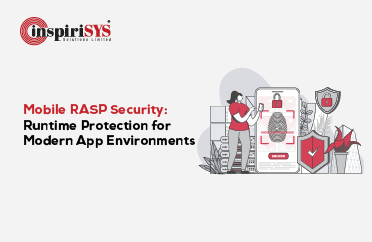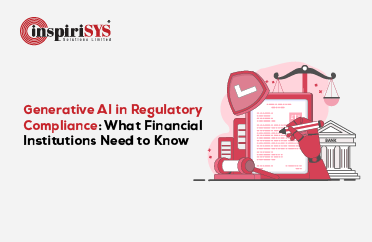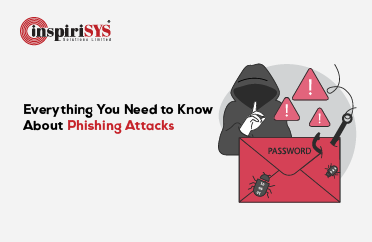Endpoint security is no longer about protecting devices with antivirus software. Organizations need a layered and integrated defence that protects all types of devices from emerging cyber threats. Generally, business leaders don’t concern about protecting their devices from attacks until it’s too late. It takes several months for them to identify a data breach. So, cybercriminals have enough time to distribute critical data before the organization start to mitigate the damage. As cyber-attacks are on the rise and the future years are probably going to be worse, endpoint protection should span a continuum that includes advanced detection & response tools and endpoint security controls.
Understand the Realism of Endpoint Security

All Endpoints are not the same
An endpoint is not limited to a computer or a mobile device. It encompasses servers, PCs, laptops, both BYOD & corporate-issued mobile devices, cloud environments, and connected devices such as printers, scanners, and even point-of-sale handhelds. Cyber actors don’t just target one type of device. To move laterally, they initiate organized campaigns across the entire environment. It is crucial to use advanced security capabilities along with built-in device defences. IoT devices are the exceptions for built-in defence. Therefore, they need to be protected with full-stack security. The objective is to not leave any endpoint exposed to threats.
Mobile Devices are the most targeted endpoints
As mobile devices are easy targets for attackers, they offer a doorway to corporate networks. Businesses are experiencing app-based attacks, targeted network-based attacks, and direct device attacks. They take advantage of low-level footholds. For this particular purpose, mobile devices should be included in the security strategy.
Centralized Endpoint Management
Organizations are recommended to have centralized control over their endpoint management. Each security solution comes with its management console. If the organization deploys several new, next-generation solutions, learning and juggling multiple consoles can overtax the already stretched the thin security team. The challenge is in the visibility of the security posture of all the devices in one place.
Holistic Device Security Strategy
The marketplace is flooded with a never-ending array of next-generation security solutions. As organizations were told that antivirus is not enough, the need to switch to a next-gen solution is rapidly increasing. But it is not about embracing next-generation solution or searching for the best use for antivirus. It’s about implementing a holistic device security strategy that coordinates an array of defences. It should include signature-based defence to reverse the effects of emerging cyber threats.
Number of Cyber Security Tools
To adapt to the evolving cybersecurity landscape, the security teams are resorted to working with state-of-the-art security solutions. Though each solution brings a new capability to the table, it is vital to manage the overall ecosystem and check how the different defences work together to protect the organization. Multivendor endpoint security technologies usually don’t collaborate. These solutions have limited visibility and see only what they can see. The burden of connecting the dots falls on the organization.
[Case Study] Explore how we helped our client to protect their endpoints with Patch Management
Framework for Next-Generation Endpoint Security
 A new security framework for endpoint security that goes beyond antivirus protection is needed to address the increasingly sophisticated threats that target endpoints. The following capabilities and technologies should be included in comprehensive next-generation endpoint security:
A new security framework for endpoint security that goes beyond antivirus protection is needed to address the increasingly sophisticated threats that target endpoints. The following capabilities and technologies should be included in comprehensive next-generation endpoint security:
Threat Prevention
Signature-less technologies such as Advanced Machine Learning (AML), behavioural analysis, memory exploit mitigation, and Operating System emulation goes beyond the signature blocking technologies. This layered endpoint security prevents cyber threats more effectively than traditional technologies such as intrusion prevention, reputation analysis, and device control.
Application control
Cyber actors exploit vulnerabilities in common applications. They use scripted content in document files to hide their activities in trusted applications. The attacks are directly targeted on memory and registry keys using common scripting languages. An organization should gain complete visibility into the application attack surface by isolating suspicious applications and protecting trusted applications from vulnerability exploits. Application isolation complements anti-malware detection by proactively blocking malicious behaviour using a zero-trust model.
Deception
Organizations had to rely on the reachability of the endpoints to put deception on individual devices. This dependence became complicated for endpoints behind firewalls, proxies, network address translation or virtual private networks. This led most security vendors to focus on network deception rather than endpoint deception. It adds an offensive layer to the security that increases the chances that an attacker in the network will be discovered.
Detection & Response
Organizations depend on signature-based anti-malware and known indicators of compromise to detect cyber-attacks. However, these detection methods are passé and can’t detect new, unknown, or zero-day threats. Cloud-based threat intelligence is the right solution for organizations rather than relying on a single IOC or source of threat intelligence.
Mobile Threat Defence
As the connected world becomes even more connected, the requirements for a robust next-generation mobile threat defence solution that utilizes pervasive analytics to predictively identify threats is the need of the hour today. The focus of cyber actors has shifted more towards exploiting vulnerabilities in networks, mobile apps, mobile operating systems and mobile user behaviour. At the same time, organizations expect to proactively prevent attacks while not disrupting users’ mobile productivity. Mobile Device Management (MDM), containerization, and VPN tunnelling are widely adopted by enterprises to keep mobile cyber threats at bay.
Endpoint Patch Management
Patch management is an essential part of securing and protecting the endpoints from cyber threats. To address enterprise needs for effective patch management in all endpoints (both on and off the network), a robust patch management solution should include broad coverage across Operating Systems, support for myriad applications, appropriate prioritization of updates, automation of the patching process, professional support for on-premises, peer-to-peer, and cloud-based patch distribution and grouping of assets for patch deployment.
Download 10 tips for effective endpoint security







